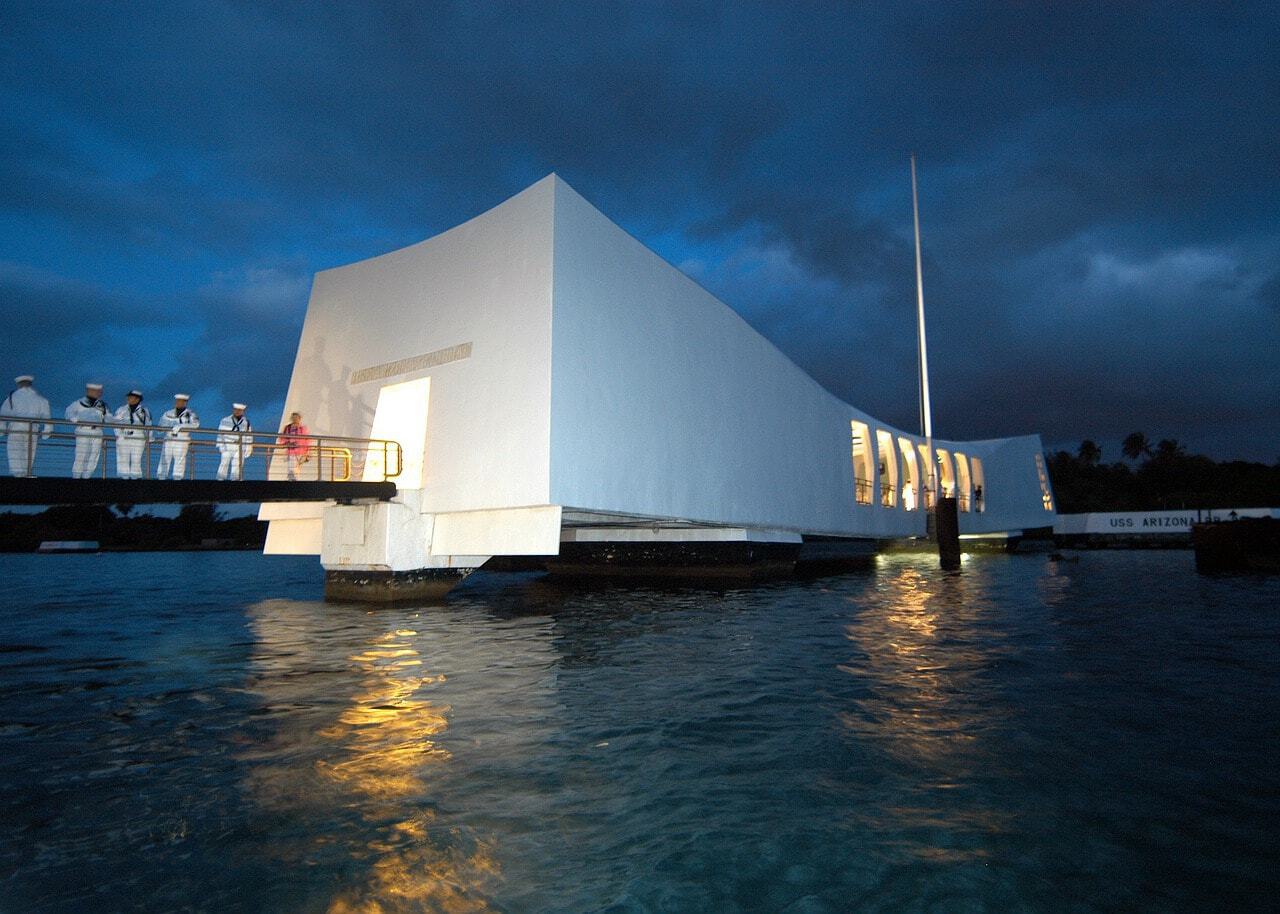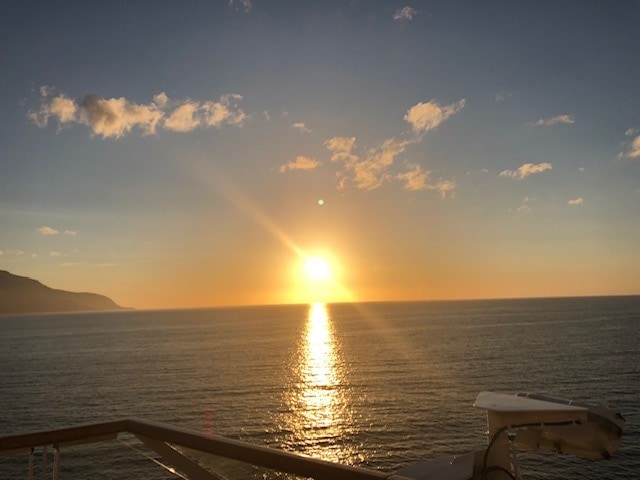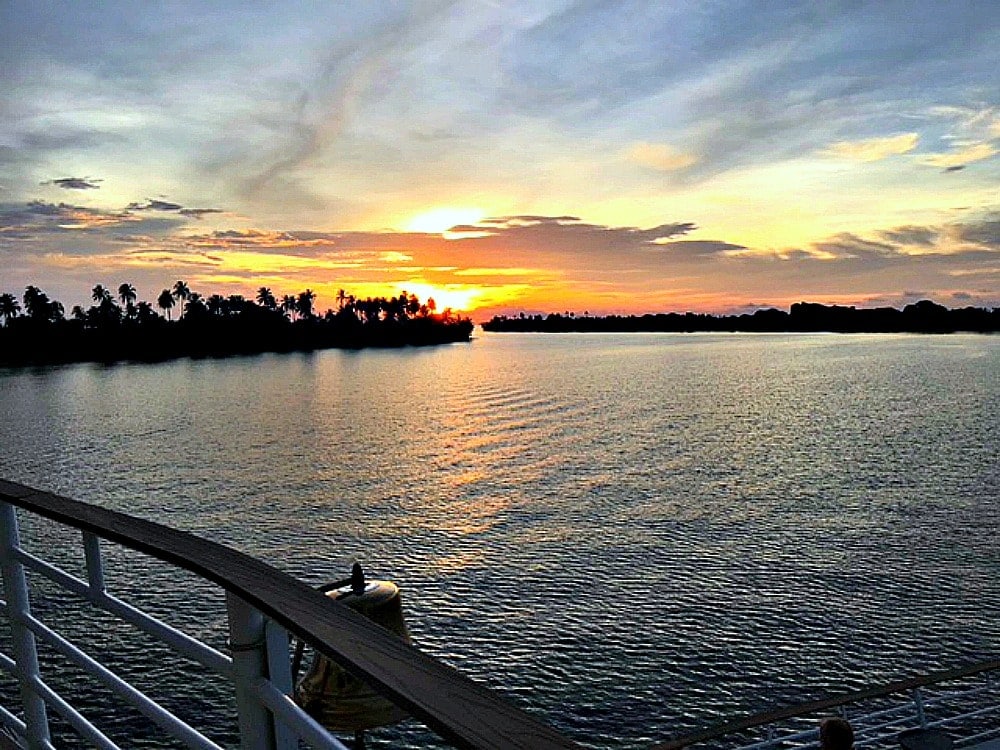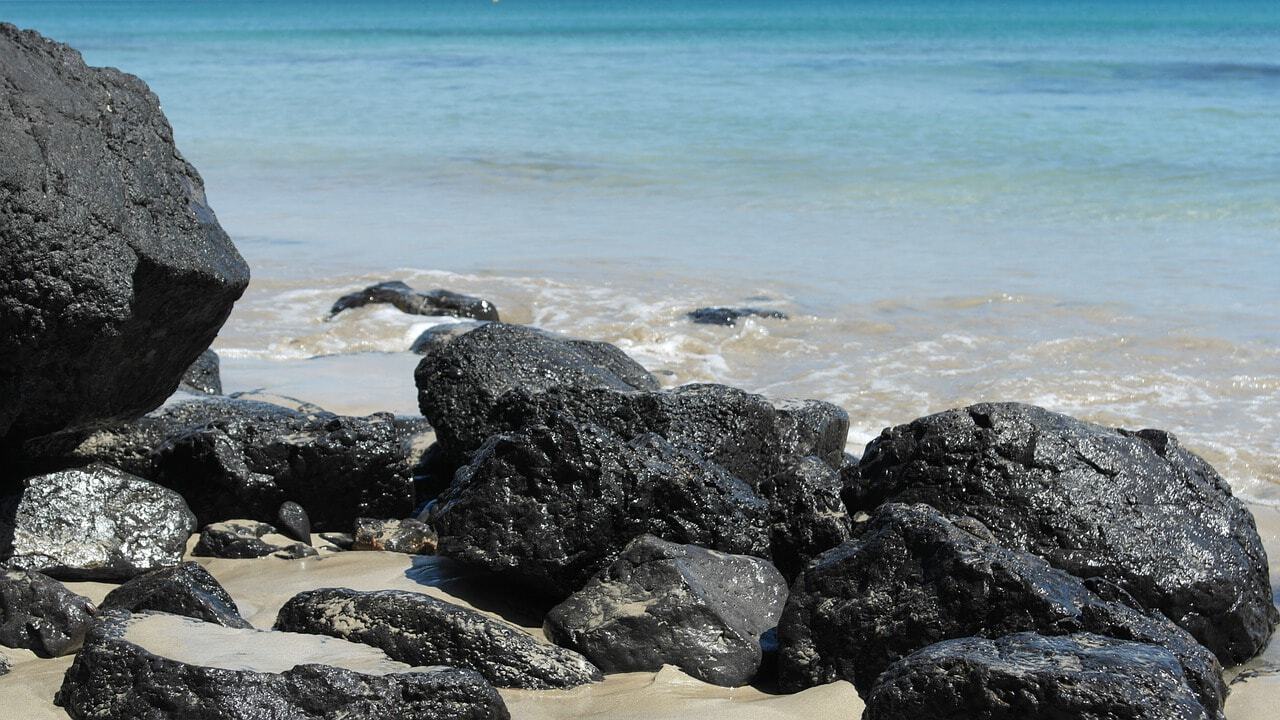
Honolulu may be known for its sun and sandy beaches, but it is also home to one of the most sobering military history sites that I’ve ever visited — the USS Arizona Memorial at Pearl Harbor. The Memorial, dedicated in 1962, honors the site where World War II began for the United States, with the bombing that entombed 1,102 crew members on December 7th, 1941.
The memorial was designed to span the hull of the sunken battleship, yet never touch it. The structure is 184 feet long, with two peaks at each end, and a deliberate sag in the middle. Alfred Preis, the memorial designer, sums it up like this:
“Wherein the structure sags in the center but stands strong and vigorous at the ends, expresses initial defeat and ultimate victory… The overall effect is one of serenity. Overtones of sadness have been omitted to permit the individual to contemplate his own personal responses… his innermost feelings.”
The ship’s huge anchor is displayed at the entrance to the visitor center, and it is here that you begin your journey through the exhibits and memorial. At the visitor center are a variety of historical exhibits and artifacts, and visitors watch a documentary film about the Pearl Harbor attack. As I looked around the theater area, I saw visitors representative of countries from around the world, including many elderly Japanese tourists. I couldn’t help but wonder how they felt after viewing the documentary. What stories had they been told, or experiences that they lived through, and how did they feel visiting the Memorial. I wondered how their view of history compared and contrasted with mine.
Following the film, visitors are transported by boat to the memorial. At the entry to the memorial, you pass by two bells that were on the USS Arizona and then enter the central assembly room. This area features seven open windows on the walls and ceiling that commemorate the date of the attack. An opening in the floor overlooks the sunken decks of the Arizona and it is from this location that visitors can pay their respects by tossing flowers and leis into the water. The oil that still seeps from the wreckage is sometimes referred to as “black tears” or “the tears of the Arizona.”
At the far end of the memorial is a marble wall shrine, behind velvet ropes, that lists the names of all those killed on the Arizona. It stands as a reminder of the very human cost of the attack, and that the beauty of the memorial is overshadowed by the solemnity and respect due those buried in the water below.
During peak tourist times it can get quite crowded and it is a stop on many organized tours. My recommendation is to visit during off-peak travel periods or first thing in the morning before the tour buses arrive. Allow about an hour and a half to see everything.
Post 9/11 security regulations are in effect, and no purses, backpacks, camera bags, diaper bags, etc., are allowed in the visitor center or on the Memorial tour. Personal cameras are allowed. There is baggage storage operated by a third party vendor that can store items for a fee. I’d recommend leaving your items at home, in your hotel room, or you car trunk.
Location: About 45 minutes outside of Waikiki, the site is best reached by car or tour bus. It is accessible by #20 and #42 bus, which drops off at the Visitor Center.
Hours: The USS Arizona Memorial is open daily, from 7:00 am – 5 pm.
Admission: Tickets are free, and issued on a first come, first served basis.
Special Visiting Notes: This is a memorial and appropriate dress is required. No bathing suits, short shorts, or inappropriate t-shirts. Members of the military should wear dress uniforms. Cell phones must be turned off.







